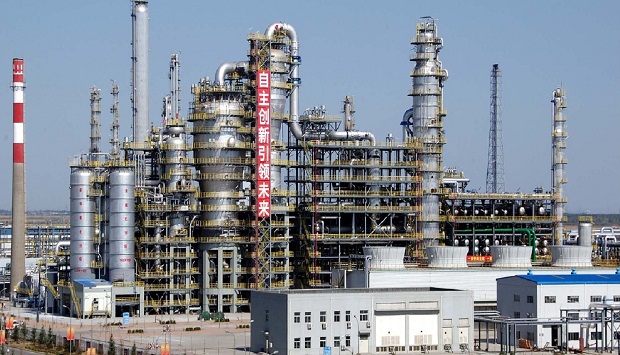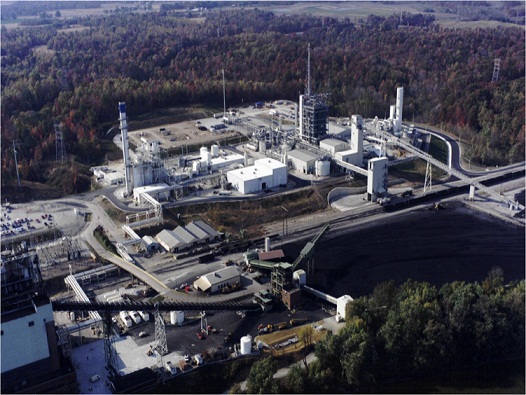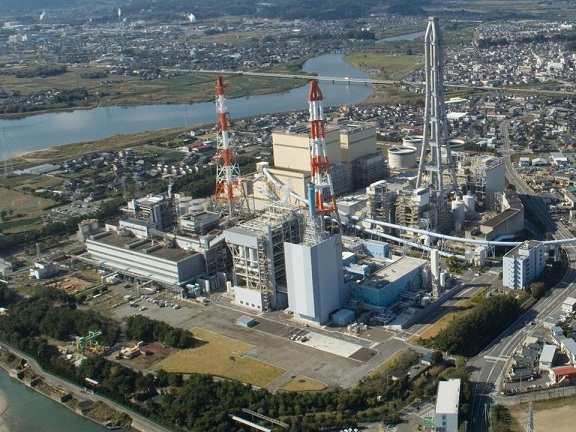2011亞太氣化大會
《2011亞太氣化大會》 GAP 2011 6月8日至10日在北京召開
Gasification Asia Pacific 2011 Conference - Beijing, June 8-10, Gasification as a response to energy needs
中國天津GreenGen項目

當今,在阿拉伯世界的地緣政治問題和日本的環境問題背景下,人們對於氣化能源領域投以越來越大的關注。
氣化工藝是一種尚不被廣泛瞭解的工藝。這種工藝旨在把生物質、有機廢料、煤或者任何其他含碳的材料轉換成被稱之為「合成氣」的氣體。這種氣體的混合物可以以很高的效率再轉換成電力或者石油產品,以滿足各種形式的能源需求。
現在,全世界共有兩百五十多個氣化裝置在運行,主要是用來生產能源,其效率明顯比常規發電站的效率高。從環境的角度來看,二氧化碳的排放是與其他的氣體排放物分離開來的,這樣處理起來成本比較低。
亞洲太平洋地區有一百四十個氣化裝置在運行,十多個正在建設中,也有幾個功率幾乎達到工業級水準的研究用氣化站在使用,所以今天這一地區在這一工藝方面是最為活躍的。2011年亞太氣化大會(GAP 2011)將於2011年6月8日至10日在北京舉辦。
《2011亞太氣化大會》理事會的成員以及發言人的專業水準都表明這一國際會議所具有的高水準。亞太氣化大會的主席塞爾日‧佩里諾(Serge Périneau)說:「我們對GAP 2011所受到的歡迎感到很高興。大會上將介紹這一領域的技術進步,這些進步使得氣化工藝性能越來越好、越來越清潔。氣化工藝將為我們應對越來越艱難的能源挑戰做出重大貢獻。」
在2011年亞太氣化大會的排程上,有適合於技術人員參加的專題討論會,也有全體會議 ;在全體會議上,企業和機構的領導人將介紹現正在運營的以及計畫中的氣化工廠的經濟和環境性能水準。大家都意識到,經驗的分享和成功的國際合作將會引領新的技術進步。
氣化工藝介紹:
採用氣化工藝可以生產大量能源,而且這種工藝有很多優勢,比如可使用多種原材料、可靈活生產多種能源(電力,液體燃料和天然氣)、發電效率高、可以將二氧化碳與其他的排放物分離開來。
目前,這一工藝的主要工業應用如下:
• 採用整體煤氣化聯合迴圈發電系統(IGCC)可以大規模發電,發電的能力可以與核電站的發電能力相比。IGCC已經在亞洲(中國,日本,新加坡)、美國、歐洲(德國、西班牙、意大利、荷蘭、捷克共和國)應用。
• 天然氣液化(GTL)是將(多餘的)天然氣轉化成液體燃料。在南非和卡塔爾有天然氣液化站。
• 利用生物質和有機廢料生產二代燃料或者發電,這是不依賴於日照和風的可再生能源,目前能源機構對這種能源的關注程度越來越高。
• 用煤或者煤+生物質生產液體燃料(煤的液化CTL),天然氣(或稱「替代天然氣」SNG)和化學產品,採用這種工藝的主要是南非、中國和美國。
除了傳統上在工廠裡進行煤的氣化之外,煤的地下氣化工藝(UCG : Underground Coal Gasification)也取得了重要的技術進步:這種工藝是通過向地下注入氧氣,從而使地下的煤層氣化。地下煤層氣化技術的好處是可以在人無法進入的煤層裡實施,要求的投資有限,現已在阿塞拜疆和澳大利亞應用。
2011年氣化大會期間將專門為 「地下煤層氣化」(UCG)組織一次專題會議,會議的排程和所有其他資訊都可以從www.gap-gasification.com網站上查閱。
2011年亞太氣化大會由世界能源理事會 (World Energy Council) 、世界煤炭協會(World Coal Association)、世界煤制油協會(World CTL Association)以及中國國家安全生產監督管理總局國際交流合作中心(NCICS)支援舉辦。

Coal-To-Petrochemicals Plant - Baotou, Inner Mongolia, China
----------------------------------------------------------
Tsutomu Watanabe
Gasification, a process that deserves to be better known, is used to convert biomass, organic waste, coal or any carbonaceous material into synthesis gas, or "syngas." In turn, this gas mixture can be converted efficiently to meet every type of energy need, both for electricity and petroleum products or hydrocarbons.
More than 250 gasification units are operated globally, mainly for electricity production, with yields substantially higher than those attained by conventional power plants. In terms of environmental impact, the CO2 emitted by the process is separated from the other gaseous effluents, allowing it to be processed at minimal cost.
Given the current geopolitical climate in the Arab world and the environmental situation in Japan, the energy sector has a growing interest in gasification.
The Asia-Pacific region is currently the most active, with 140 units in operation, another 10 under construction and several nearly industrial-capacity research units. It will play host to the next international gasification conference, Gasification Asia Pacific 2011 or GAP 2011, in Beijing from June 8 to 10, 2011.
The members of the GAP 2011 Advisory Board and the expertise of the invited speakers attest to the event's level of excellence. Says Serge Périneau, President of Gasification Asia Pacific, "We are very pleased with the reception of GAP 2011. Through the technological advances that will be presented there, the increasingly effective and clean process of gasification will contribute more and more to the formidable challenges facing the energy sector."
The program for GAP 2011 includes technology workshops aimed at technicians, followed by plenary sessions where the heads of companies and institutions will present the economic and environmental performance of currently operating and future units. Everyone knows that further advances will result from sharing experiences and successful partnerships, often international.

IGCC Plant - Wabash River, Indiana USA
More information on gasification:
Gasification is a method for producing large volumes of energy that offers many advantages: a diverse array of raw materials as inputs, a flexible choice in the type of energy produced (electricity, fuels or other hydrocarbons), high yield electricity production and by-production of CO2 separated from the other effluents.
To date, the industrial applications mainly encompass:
- Massive electricity generation via the Integrated Gasification Combined Cycle (IGCC), with capacities of same order of magnitude a nuclear plants. IGCC units are being operated in Asia (China, Japan and Singapore), the United States and Europe (Czech Republic, Germany, Italy, Netherlands and Spain);
- Gas To Liquids (GTL), which converts natural gas, often in surplus quantities, into liquid fuels. This process is already in use in South Africa and Qatar.
- The use of biomass and organic wastes to produce second-generation fuels or electricity: as a renewable energy not produced by sun and wind, therefore not subject to interruptions, it is drawing attention from more and more energy experts;
- Coal To Liquids (CTL), Substitute Natural Gas (SNG) and chemical products generated from coal or coal + biomass, mainly in China, South Africa and the United States.
In addition to surface gasification plants, technologists have developed Underground Coal Gasification (UCG), where oxygen is added underground to coal to produce syngas. The advantage of UCG, operated in Azerbaijan and Australia, is that it can be performed in mines that are inaccessible to humans with a limited investment.
GAP 2011 will feature an entire session on UCG, which is just one of the topics that will be addressed at the conference. The program and other practical information are available at www.gap-gasification.com.
The GAP 2011 conference is sponsored by the World Energy Council, the World Coal Association, World CTL and the Chinese NCICS.

IGCC Picture 2 of Clean Coal Power plant - Japan





